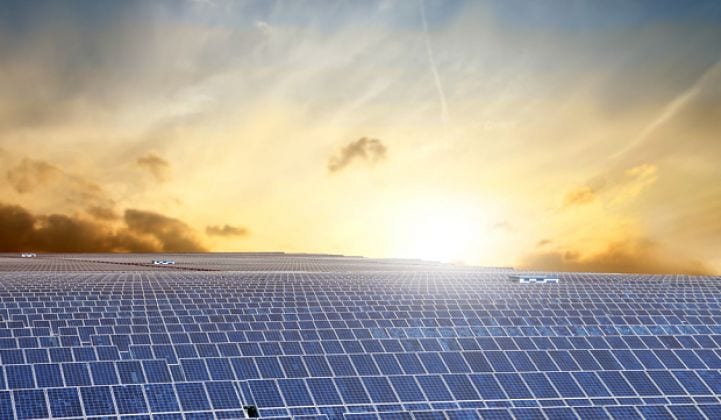

California may soon be making renewable energy history again, with reports circulating that the California Energy Commission will approve a move to make it compulsory to build solar panels on all new homes, condos, and apartment buildings from 2020 onwards.
The North American “Golden State” is already a leading proponent of renewable energy, not just in the United States, but around the world. California is, theoretically, the world’s 5thlargest economy – recently surpassing the United Kingdom, with an economy of $2.7 trillion.
Unsurprisingly, therefore – considering the state’s renewable energy targets of 33% by 2020 and 50% by 2030 – California also ranks as a leading renewable energy giant, with 27,800 MW worth of renewable energy capacity (as of 31 October, 2017).
Specifically, California has 16,200 MW worth of solar installed, and 5,600 MW worth of wind energy – although, more recent figures suggest that even in the last few months of 2017 California was installing solar, as a report published earlier this year by GTM Research and the Solar Energy Industries Association put California’s total levelof solar at 19,818 MW.
To put that into global terms, California is not doing too badly. China finished 2017 with 130 GW worth of solar, Japan has 48.6 GW, and the United States (including California) has 41.1 GW.
At what point, however, does California overtake the rest of the United States? According to reports circulating about a California Energy Commission (CEC) meeting taking place on Tuesday, California’s solar levels might get a swift kick in the rear.
Specifically, reports are suggesting that the CEC will vote Tuesday on approving its 2019 Building Energy Efficiency Standards which, among other things, includes a provision requiring that all new residential buildings be built with solar PV installations.
More than that, however, the Standardsoutline a variety of energy efficient measures pertaining to air conditioning, water heaters, glass, and more.
But obviously, the new requirement for solar PV installations is making all the headlines. According to the text of the guidelines, “All low-rise residential buildings shall have a photovoltaic (PV) system meeting the minimum qualification requirements as specified in Joint Appendix JA11, with annual electrical output equal to or greater than the dwelling’s annual electrical usage as determined by Equation 150.1-C.”
Some of that is very text-specific, but the ultimate goal is to ensure that every new house – with very few exceptions – are built with solar PV installations that account for some or all of the dwellings electricity consumption.
This will be a ground-breaking decision, making it the first state in the country to require solar PV on all new residential buildings.
“California is about to take a quantum leap in energy standards,” said Bob Raymer, technical director for the California Building Industry Association, speaking to The Mercury News. “No other state in the nation mandates solar, and we are about to take that leap.”
The move won’t require homes to reach net-zero carbon status, but the move will provide “compliance credits” to those who install battery storage.
While this will definitely end up increasing construction costs – by as much as between $25,000 to $30,000, according to some reports – estimates that the solar installations could save owners between $50,000 and $60,000 over the life of the solar PV installation.
New research identifies electorate of New England as the most valuable patch of land in…
United Firefighters Union of Australia says Dutton's nuclear power plan introduces a "new, more dangerous…
Greens to block federal approval of new coal and gas mines in a hung parliament,…
Swiss startup inaugurates first removable solar power plant on an operational railway line, and is…
No matter where you live, you have a vote that matters on climate at this…
Queensland researchers say they have set a new efficiency record for a type of solar…